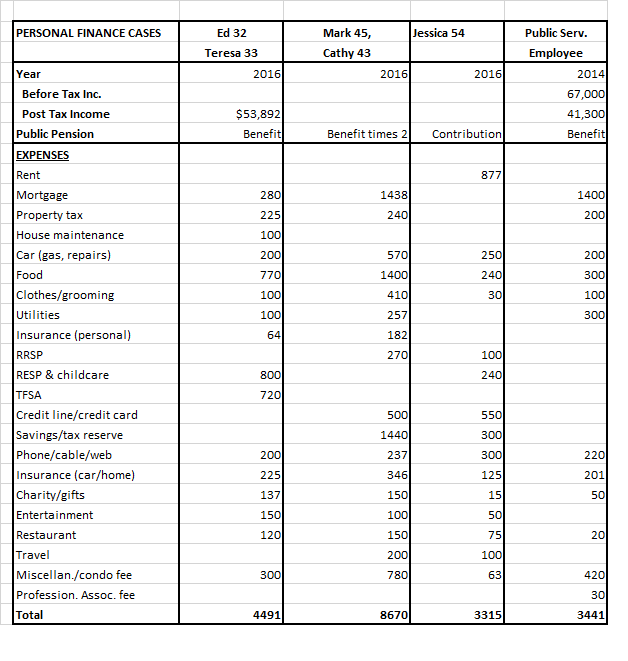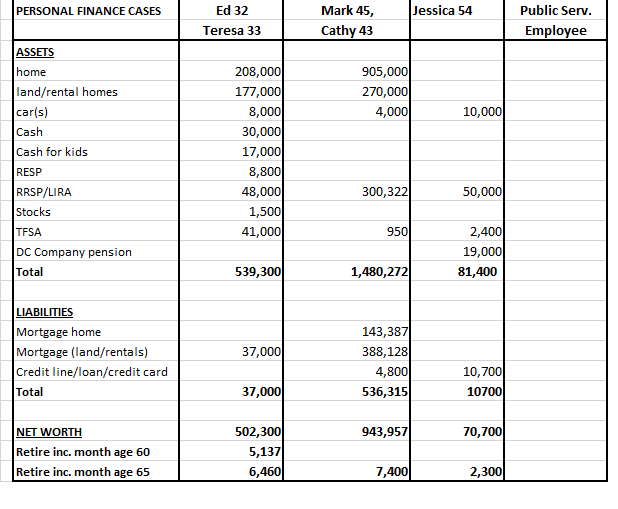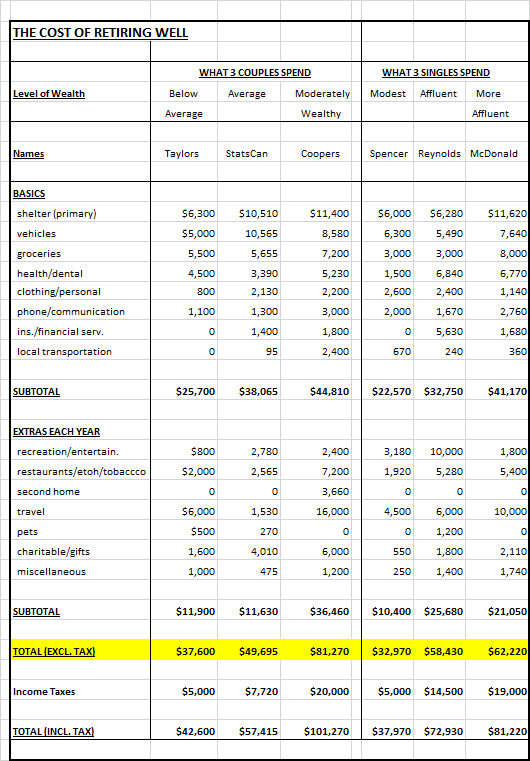THE TRUMP’S FINANCIAL DISCRIMINATION OF SINGLES
(These thoughts are purely the blunt, no nonsense personal opinions of the author and are not intended to provide personal or financial advice).
Ivanka Trump in her speech yesterday at the Republican Convention stated that something needs to be done about single women without children being paid more than married women with children.
Some studies also show that women under the age of thirty make more than men and some studies show that employers don’t want to hire married women with children.
There also has been a lot said about women being paid less than men for the same job, married men being paid more than single men. There is no doubt that there should equal pay for equal work.
Three different sources are outlined below showing the controversy generated by the facts and whether the fact are really true.
From “Workplace Salaries: At Last, Women on top”, Time magazine, September 1, 2010 (time):
There has been recent evidence in the USA in many of the largest cities that the median income salaries of young women are 8% higher (and in some cases even higher) than men in their peer group. However, this gap does not apply to rural areas and disappears for older women, married women and women with children.
However, there also are many factors where perception is false because all the facts have not been taken into consideration. Some of these facts are:
- Education. Women are outpacing men in obtaining degrees.
- Knowledge-based industries. Larger cities which tend to have knowledge-based industries will have higher pay. The decline of a manufacturing base in cities may result in lower wages.
- Minorities. Hispanic and black women are twice as likely to graduate from college as male peers.
“The holdout cities — those where the earnings of single, college-educated young women still lag men’s — tended to be built around industries that are heavily male-dominated, such as software development or military-technology contracting. In other words, Silicon Valley could also be called Gender Gap Gully.
As for the somewhat depressing caveat that the findings held true only for women who were childless and single: it’s not their marital status that puts the squeeze on their income. Rather, highly educated women tend to marry and have children later. Thus the women who earn the most in their 20s are usually single and childless”.
From “Fact Check: Do young, childless women earn more than men?”, September 10, 2014 (abc)states: data does not hold up because median figures don’t compare people who have the same jobs and qualifications. They are an aggregate of the salaries of all people in a particular cohort; therefore, figures are misleading.
From “Childless Women in their twenties out-earn men. So?”, Matthew Rouso, February 24, 2014, Forbes (forbes) :
“Statistics show only the average difference between men and women, across all jobs. It doesn’t control for the types of job, the number of hours worked or for time taken off (to raise children, for example)….There are differences in job types, education levels, hours worked, and other factors that lead to these wage differentials. But these factors are just as responsible for the overall difference in wages between men and women. Once you control for factors such as college major, time off of the labor force to raise children, and hours worked per week, the gender wage gap essentially disappears. A big part of the difference in pay is due to the choice of jobs: women choose to enter career fields that pay less than those that men choose. Women are still more like to be Kindergarten teachers while men are more likely to work in finance. In short, firms aren’t discriminating against women. The reality remains that women, on average, do earn less than men. But to blame it on discrimination is misguided.
Solutions to the gender wage gap aren’t simple. Taking time off from a job, or working fewer hours, will reduce one’s earning potential, but many people (rightly) relish the opportunity to take time off to raise children. There are no easy policy recommendations to deal with the loss of earning power for those who take time off to raise children. But there is one thing we can do that would decrease the gender wage gap with no negative consequences: ensure that women are encouraged to pursue work in high-paying industries….Women may earn less than men, but causes are more complex than the cries of discrimination we hear from politicians. When politicians mislead the public on this issue, the consequence is our delay in solving the real problem”.
Comment on Ivanka Trump’s statement: It is difficult to find the source of her information. Whatever the source is, what is more disturbing is the continuous reference by politicians and business people to marital status when human rights policies specifically state marital status should not be used in employment. If Ivanka Trump wants to deal with married women’s pay, then she should address all other employment discrimination such as married men being paid more than single men.
TAX REFORM: DONALD J. TRUMP FOR PRESIDENT (donaldjtrump)
Donald Trump as part of his bid for President platform has outlined his suggestion for tax reform. A direct quote from his reform states:
“If you are single and earn less than $25,000, or married and jointly earn less than $50,000, you will not owe any income tax. That removes nearly 75 million households – over 50% – from the income tax rolls…..All other Americans will get a simpler tax code with four brackets – 0%, 10%, 20% and 25% – instead of the current seven. This new tax code eliminates the marriage penalty and the Alternative Minimum Tax (AMT) while providing the lowest tax rate since before World War II.”
Comment of Donald Trump’s Tax Reform: Here we go again, past posts have shown that cost of living is higher for a single person family unit than a married or coupled family unit without children. This once again shows the financial illiteracy and ignorance regarding singles’ finances by politicians and business persons. We do not know all the details of American tax system, but Trump cannot just give a figure for singles, and then multiply it by two for married or coupled family units. Finances for singles don’t work that way. The cost of living for a single person is higher than the cost of living for a family unit of two married or coupled persons, so why should married/coupled family units get the benefit of double tax free income? Marriage penalty??? What about all the marriage benefits that married or coupled family units receive? He also includes a separate column for head of household in his four tax brackets. There is no explanation of what head of household includes, so it is difficult to know what this tax group is all about.
Financial discrimination will continue if singles figures are just multiplied by two to arrive at married family unit figures. When, when are politicians and businessmen going to drop the marital status designation and use family units as the designated standard? Why can’t tax reform be more progressive instead of using same old financially discriminatory practices?
Cost of living equivalence scales such as the square root equivalence scale show that if a value of ‘1’ is used for a single person family unit, then the value of ‘1.4’ is applied to two adults, ‘1.7’ is used for two adults one child, ‘2.0’ is used for two adults two children and ‘2.2’ is used for two adults three children.
CONCLUSION
It is pathetic that marital status continues to be used a standard for tax, hiring and income policies when this is a direct violation of human right and civil rights. It is absurd how married or coupled family units (including the Trumps) continue to protect their own interests without including all family members in financial formulas and favouring married family units over single person family units.
Ivanka Trump says married women are being paid less than single woman. If one considers that most of management and business persons who do the hiring and determine the income schedules are married, then married people are the ones guilty of committing the wrongful acts against themselves, so don’t go blaming singles for this! There are many who do not like unions, but at least they pay the same wage for the same work without inclusion of marital and sex status.
Married and coupled women with children want it all. They want employment time off for their children and then want full compensation even for the years they haven’t been working. If married women take time off to be with their children, they are not going to have the same level of work experience as a single person who has continuously been employed. When are married and coupled women ever going to realize that they can’t have it all while taking singles down to a standard of living that is lower than theirs?
(This blog is of a general nature about financial discrimination of individuals/singles. It is not intended to provide personal or financial advice).




